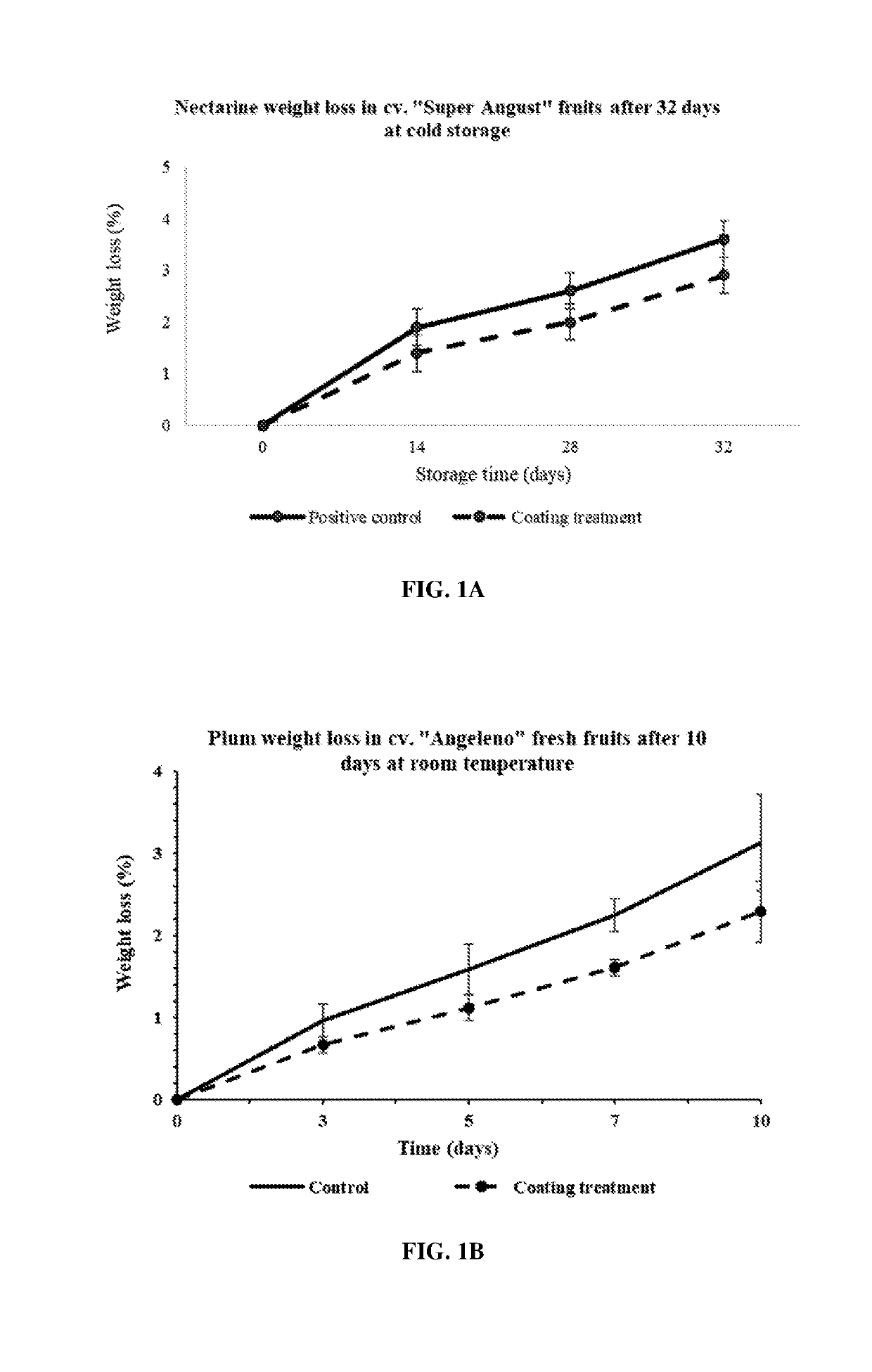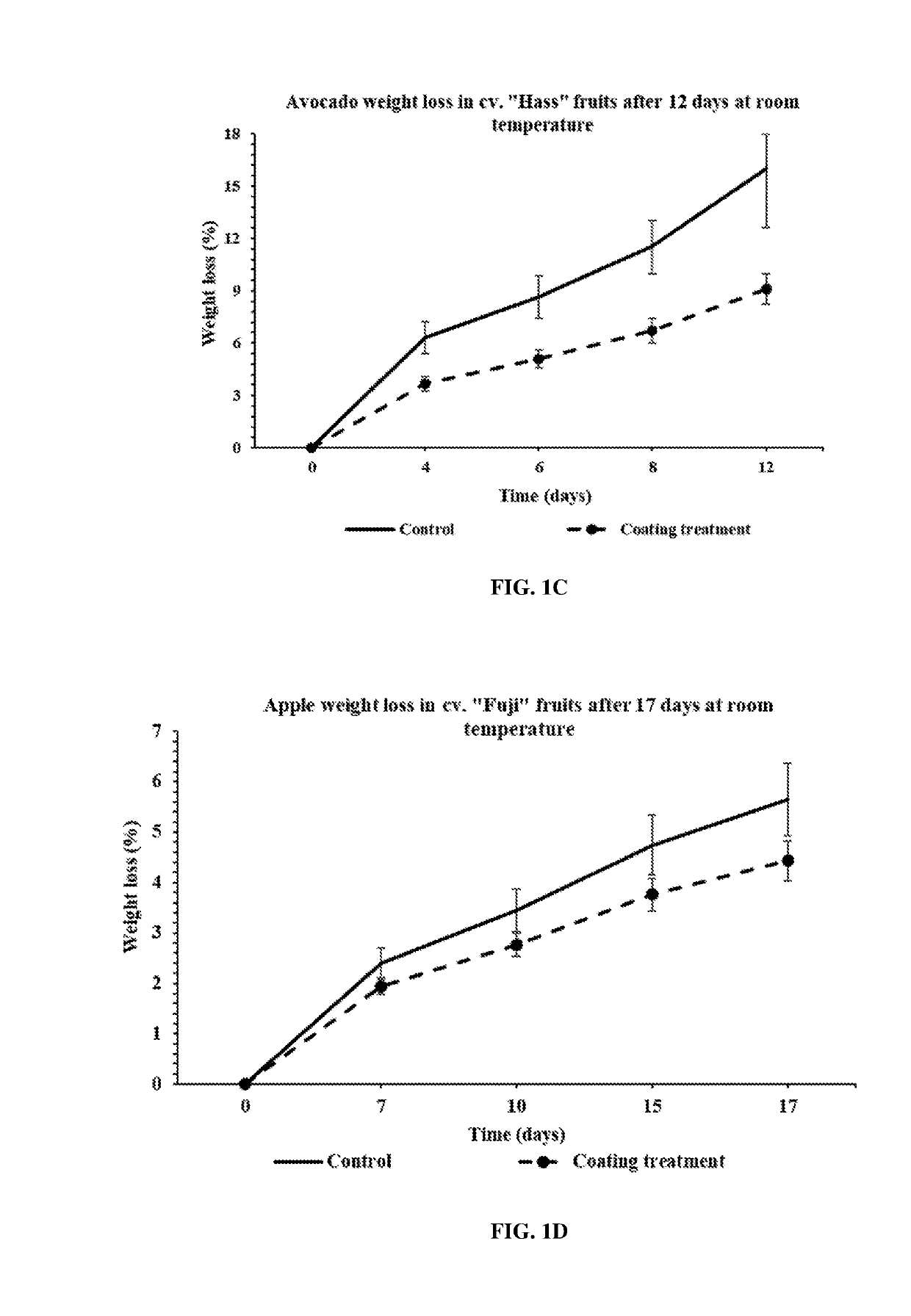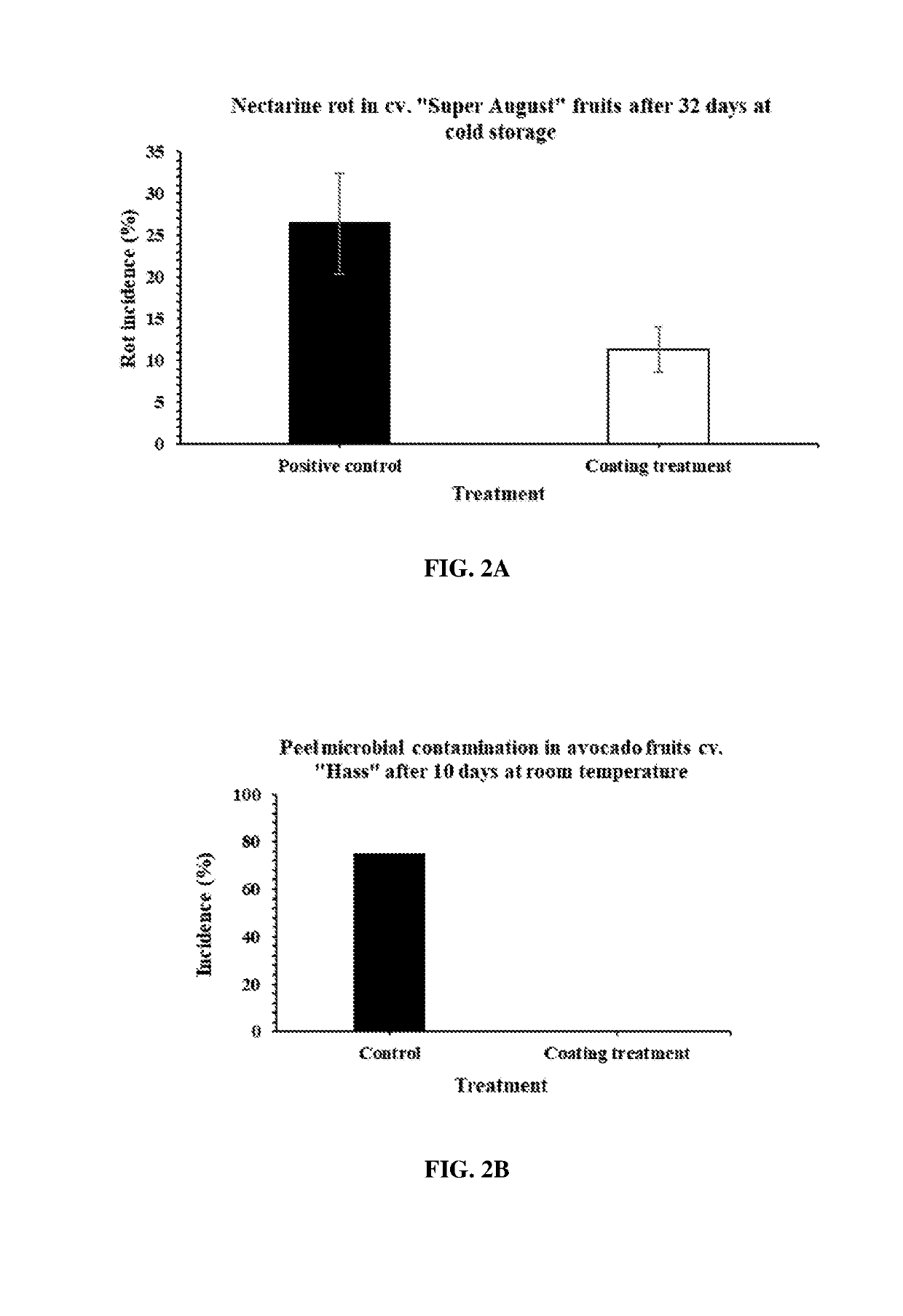Coating compositions and methods of use thereof
a technology of compositions and coatings, applied in the field of coating compositions, can solve the problems of post-harvest fruits and vegetables deteriorating, flavor, appearance, and nutritional value of post-harvest fruits and vegetables, and deteriorating until rotting, so as to reduce dehydration and gas transfer, and prolong the shelf life of fruits
- Summary
- Abstract
- Description
- Claims
- Application Information
AI Technical Summary
Benefits of technology
Problems solved by technology
Method used
Image
Examples
example 1
The Coating Composition Reduces Percent Weight Loss of Fruits
[0122]The effects of the coating composition on the percent weight loss of fruits was evaluated. Fruits (e.g., nectarines, plums, avocados and apples) were coated with different coating compositions as described herein. Uncoated fruits or fruits coated with a commercially available product were used as controls. The weight of the fruits was measured and the fruits were transferred to determined temperature: 0° C. for nectarine (transportation condition) and 20° C. for plums, avocados and apples (room condition). At various times after storage at these conditions, the weight of the fruits was measured.
[0123]The percent weight loss of nectarines (FIG. 1A), coated with the coating compositions provided herein were similar to the percent weight loss of the control fruits coated with a commercially available coating. Plums (FIG. 1B), avocados (FIG. 1C), and apples (FIG. 1D) coated with the coating compositions provided herein h...
example 2
The Coating Composition Reduces Rotting of Fruits
[0124]To examine the effects of the coating composition on rotting of fruits, different fruits were treated with the coating composition, stored, and analyzed for rot incidence, peel microbial contamination incidence and severity, anthracnose incidence and severity, and stem end rot incidence and severity. Rot incidence was reduced in coated nectarines compared to controls coated with a commercial coating (FIG. 2A). Compared to untreated controls, coated avocados had reduced peel microbial contamination incidence (FIG. 2B) and reduced peel microbial contamination severity (FIG. 2C). Anthracnose incidence (FIG. 2D) and anthracnose severity (FIG. 2E) of coated avocados was reduced compared to control untreated avocados. Stem end rot incidence (FIG. 2F) and stem end rot severity (FIG. 2G) of coated avocados was reduced compared to control untreated avocados.
example 3
Antifungal Effect of Hydrolyzed Saponin Extract of Quinoa on Mycelial Growth of the Fungus Botrytis Cinerea
[0125]To examine the effects of hydrolyzed saponin extract of quinoa on mycelial growth of the fungus Botrytis cinerea, different concentrations of hydrolyzed saponin extract of quinoa were incubated with Botrytis cinerea strain B05.10 for 48 hours and the percent inhibition was determined. Hydrolyzed saponin extract of quinoa inhibited mycelial growth of the fungus Botrytis cinerea in a dose dependent manner using (FIG. 3A). Mycelial growth inhibition in the presence of hydrolyzed saponin extract of quinoa was visually observed after 48 hours (FIG. 3B).
PUM
| Property | Measurement | Unit |
|---|---|---|
| temperature | aaaaa | aaaaa |
| temperature | aaaaa | aaaaa |
| temperature | aaaaa | aaaaa |
Abstract
Description
Claims
Application Information
 Login to View More
Login to View More - R&D
- Intellectual Property
- Life Sciences
- Materials
- Tech Scout
- Unparalleled Data Quality
- Higher Quality Content
- 60% Fewer Hallucinations
Browse by: Latest US Patents, China's latest patents, Technical Efficacy Thesaurus, Application Domain, Technology Topic, Popular Technical Reports.
© 2025 PatSnap. All rights reserved.Legal|Privacy policy|Modern Slavery Act Transparency Statement|Sitemap|About US| Contact US: help@patsnap.com



